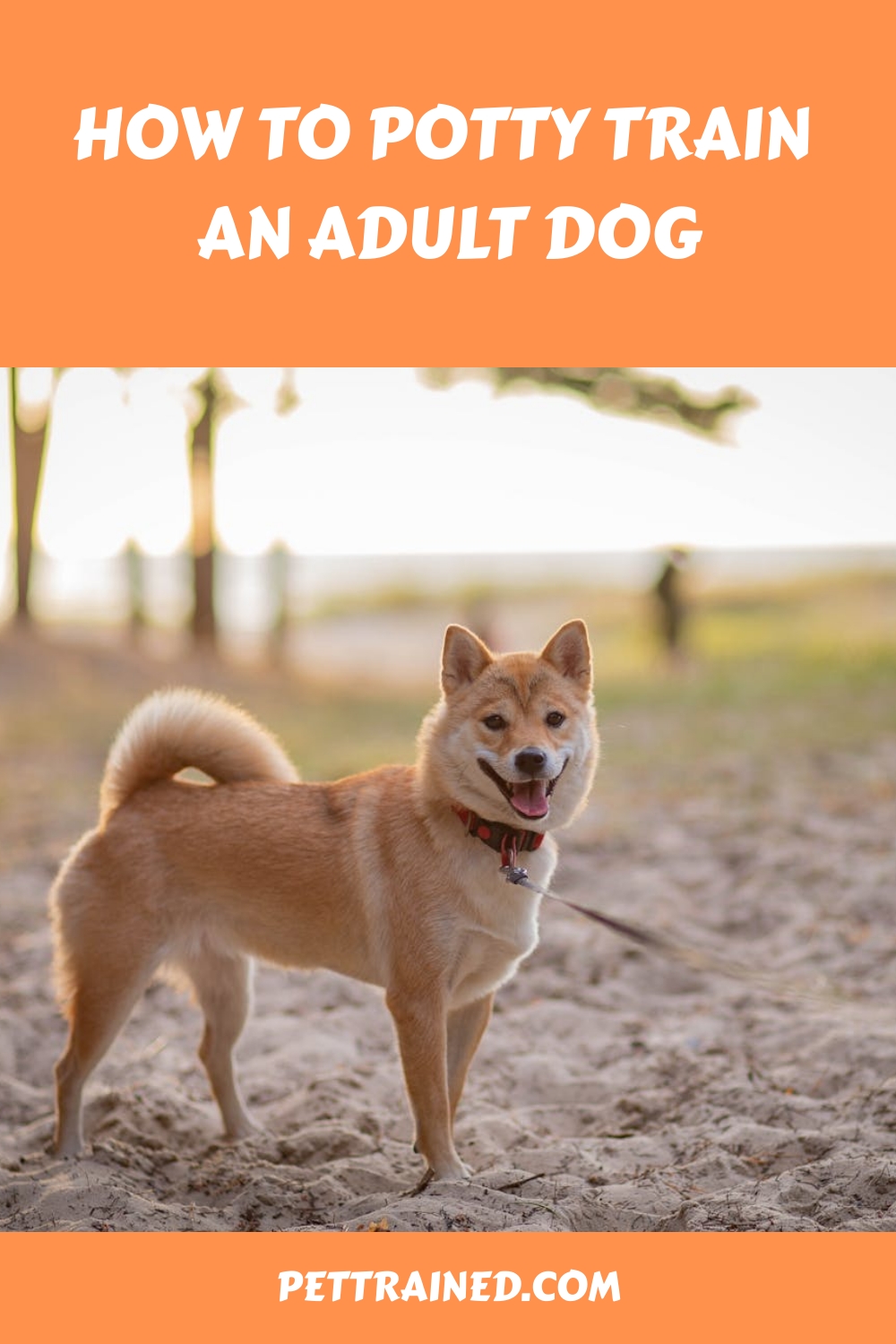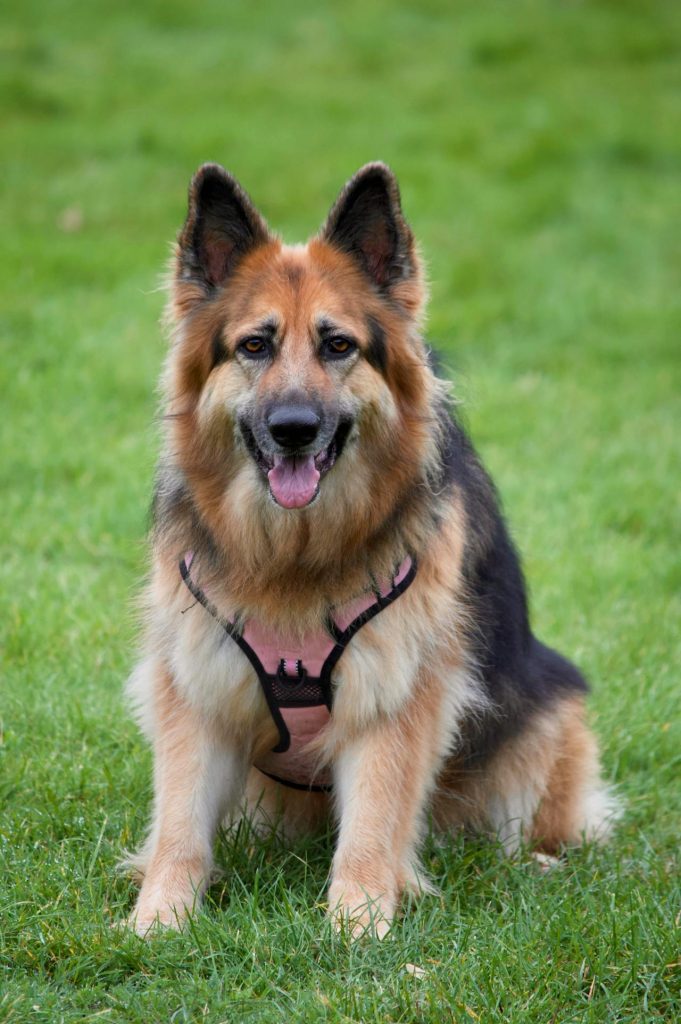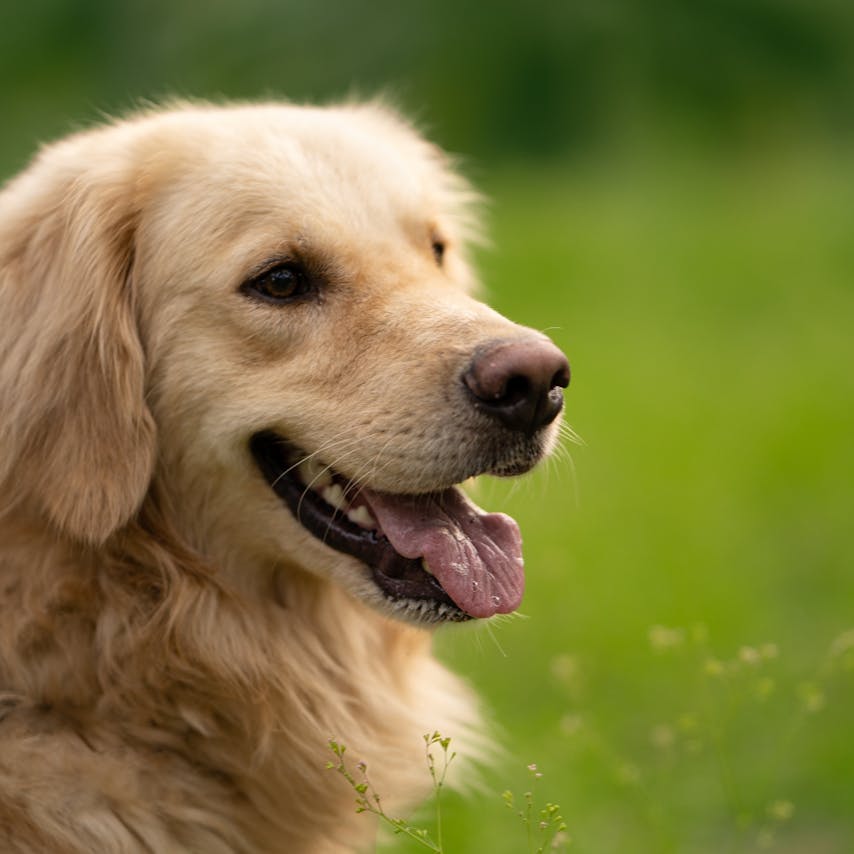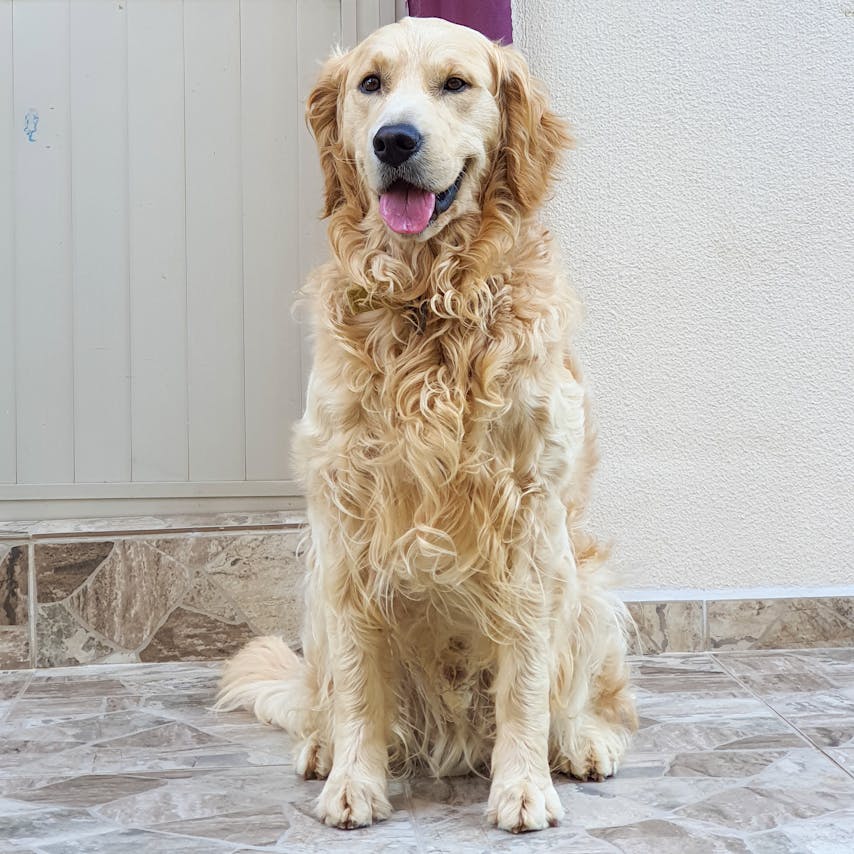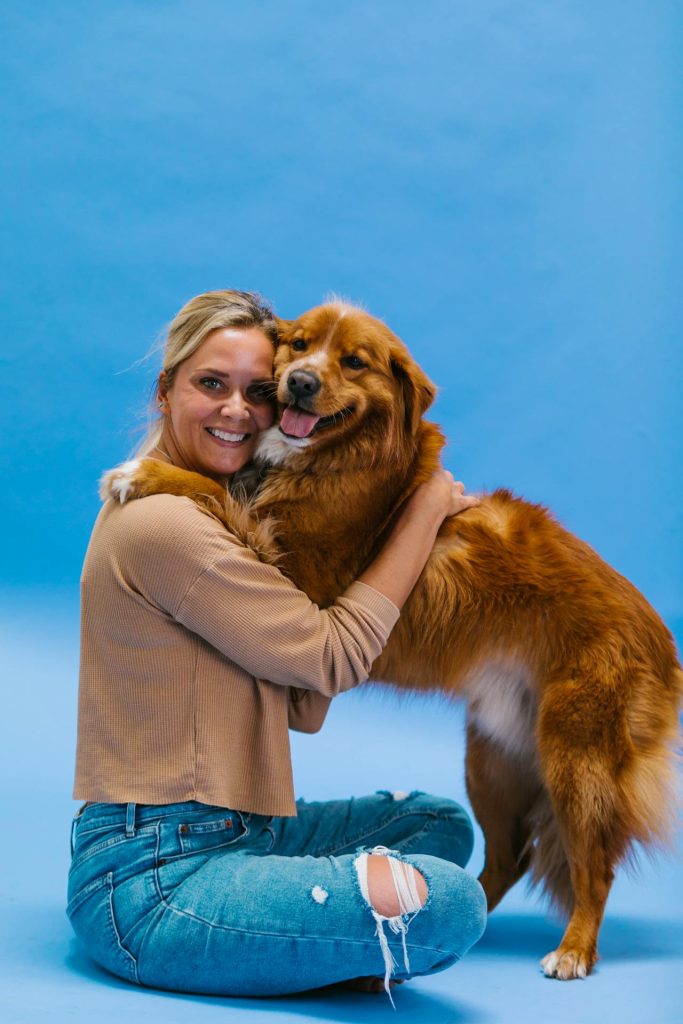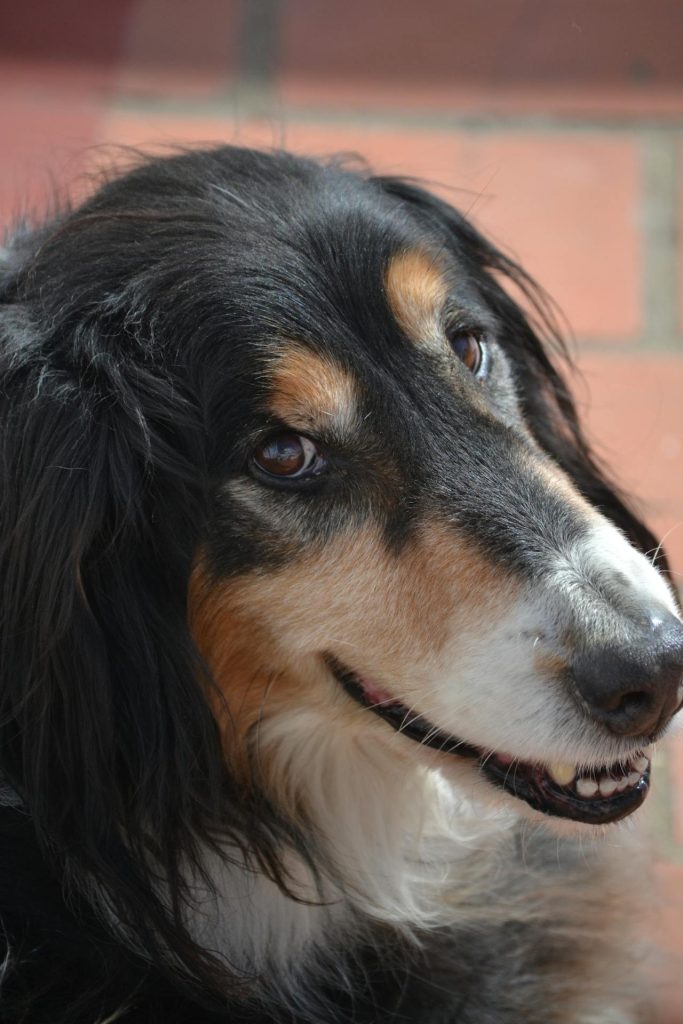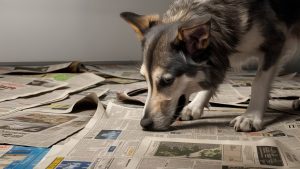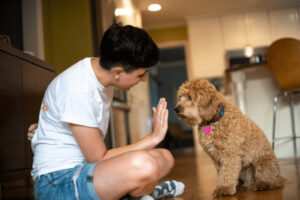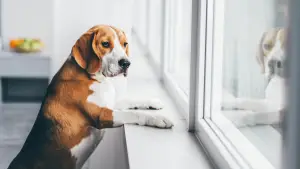Potty training an adult dog involves understanding their behavior, establishing a fixed routine, and using positive reinforcement.
Start by recognizing signs like sniffing and circling, which indicate they need to go.
Implement consistent feeding and bathroom schedules, and choose a designated spot for elimination.
Reward your dog immediately with praise or treats once they go in the right place.
Supervise them closely and confine them when necessary to prevent accidents.
If an accident happens, clean it promptly without punishment to avoid anxiety.
This post contains affiliate links. However all the information provided on this site are my own honest opinions. See more in Disclaimer.
With patience and a detailed training plan, you’ll see significant progress in your dog’s potty habits.
Table of Contents
Key Takeaways
- Establish a consistent routine with regular feeding times and scheduled bathroom breaks.
- Choose a designated spot for elimination and reinforce it with scent marking.
- Use positive reinforcement immediately after the dog eliminates in the correct spot.
- Supervise and confine the dog to prevent accidents and reinforce proper habits.
Understand Your Dog’s Behavior
To effectively potty train an adult dog, you must first understand their behavior and natural instincts. Recognizing and interpreting your dog’s body language and behavioral cues is essential.

Dogs communicate through subtle signs, and being observant can greatly streamline the training process. Start by watching for common indicators that your dog needs to relieve themselves.
These cues often include sniffing the ground, circling, or suddenly becoming restless.
When you see these behaviors, it’s vital to act quickly and guide your dog to the appropriate potty area. If you miss these signs, your dog may resort to eliminating indoors, which can set back your training efforts.
In addition to immediate cues, pay attention to your dog’s general demeanor and habits. Some dogs may have specific times of day when they’re more likely to need a bathroom break.
Understanding these patterns allows you to anticipate their needs better and prevent accidents.
Establish a Consistent Routine
Once you recognize your dog’s behavior cues, establish a consistent routine to reinforce proper potty habits. Start by scheduling regular feeding times, as predictable meal times help regulate your dog’s digestive system.
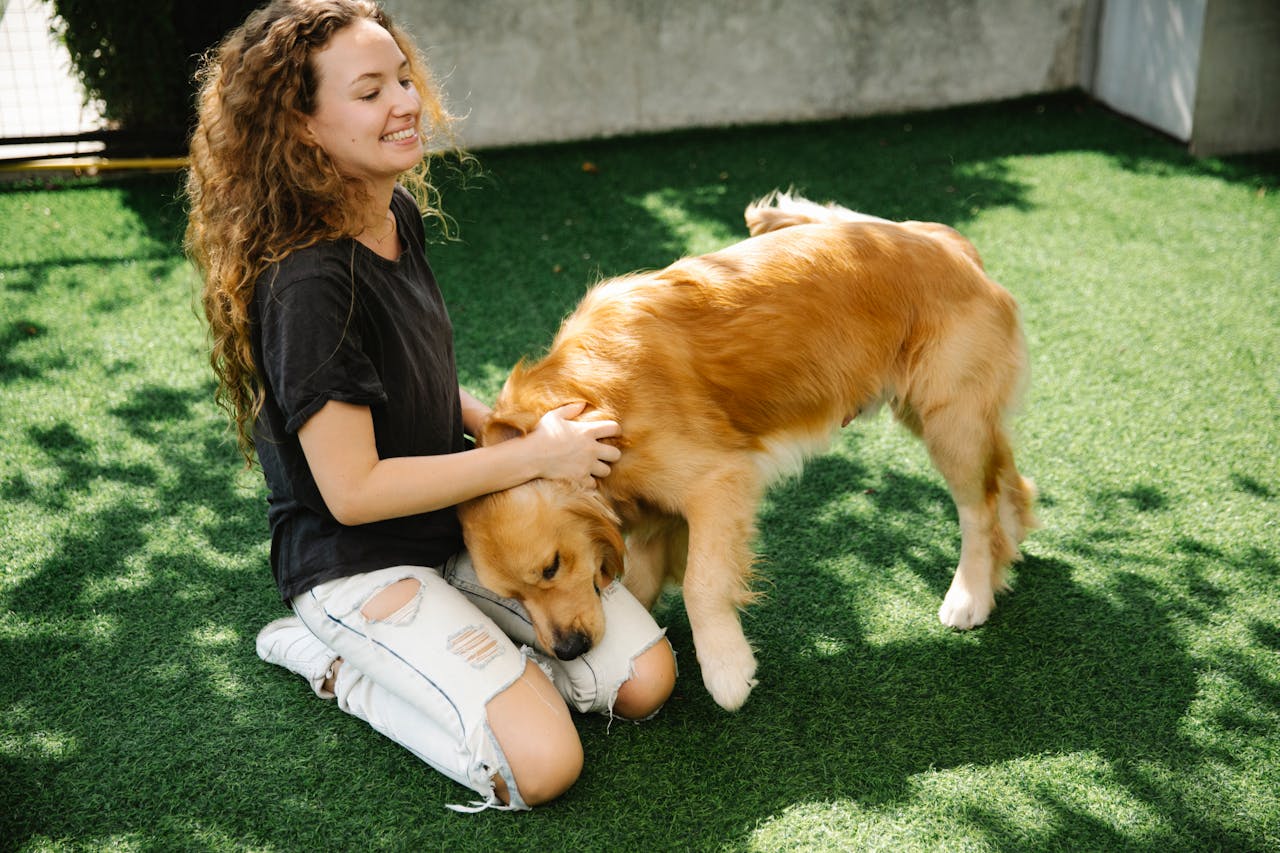
Take your dog out immediately after meals, and at consistent intervals throughout the day, such as early morning, after playtime, and before bedtime. Consistency is key to helping your dog understand when it’s time to go.
Incorporate precise reward timing to reinforce positive behavior. The moment your dog eliminates in the appropriate spot, provide immediate praise and a treat.
This immediate reinforcement helps your dog associate the act of going potty outside with positive outcomes, strengthening desired behavior patterns.
Scent recognition also plays an essential role in establishing a routine. Dogs rely heavily on their sense of smell, so bring your dog to the same spot each time.
The familiar scents will cue them to understand that this is the designated area for elimination.
Over time, your dog will recognize the scent and feel prompted to go upon arrival.
Choose a Designated Spot
Selecting a specific area for your dog to consistently use as their bathroom spot can greatly streamline the potty training process.
To begin, consider your dog’s outdoor preferences. Some dogs favor grassy areas, while others might prefer gravel or dirt.
Observing your dog’s behavior can help identify the ideal location. Additionally, make sure the spot is easily accessible and safe for your dog.
When choosing a designated spot, consider how scent marking plays an essential role in a dog’s potty habits. Dogs use their keen sense of smell to identify previous bathroom areas, which can reinforce the habit of returning to the same spot.
To facilitate this, refrain from cleaning the area too thoroughly during the initial training phase, as leaving some scent behind can be beneficial.
Here is a table to summarize the key considerations:
| Key Factors | Description | Tips for Implementation |
|---|---|---|
| Outdoor Preferences | Identify preferred terrain | Observe and note your dog’s habits |
| Accessibility | Make sure easy access and safety | Choose a spot close to the door |
| Scent Marking | Utilize dog’s sense of smell | Leave some scent in the area |
| Consistency | Use the same spot every time | Take your dog to the spot regularly |
Following these guidelines will help establish a reliable bathroom routine. This will make the potty training process smoother for both you and your dog.
Use Positive Reinforcement
Harnessing the power of positive reinforcement is vital in effectively potty training your adult dog. Focus on rewarding desired behaviors immediately.
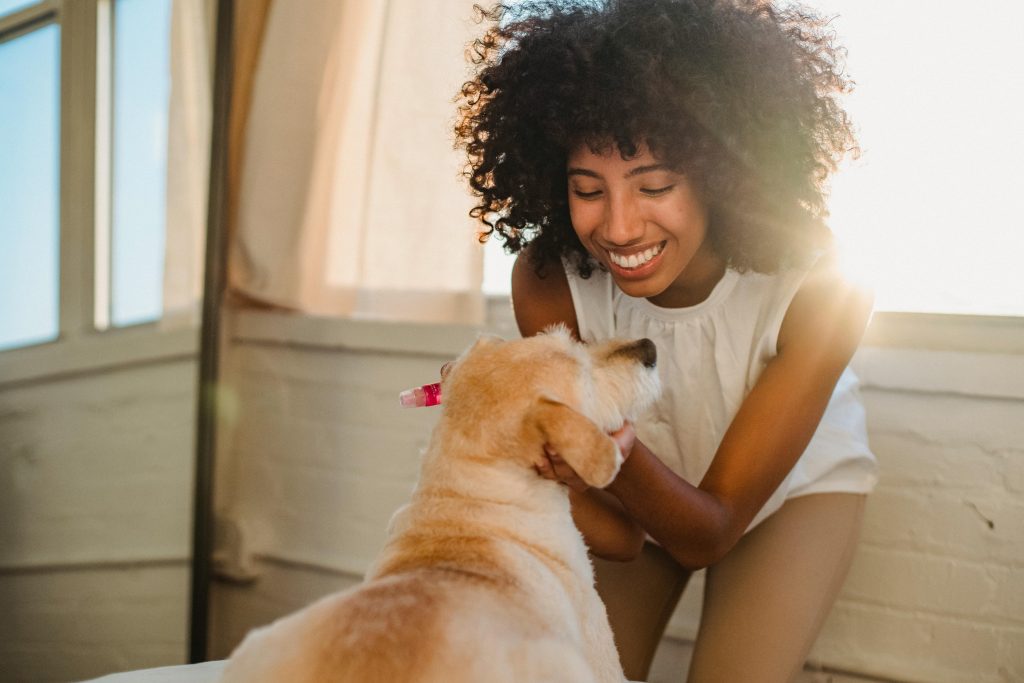
When your dog eliminates in the designated spot, provide positive rewards such as treats, verbal praise, or a favorite toy.
This approach uses operant conditioning, a proven training technique that reinforces the connection between the dog’s action and your approval.
Timing is important. Offer rewards within a few seconds of the desired behavior to guarantee your dog associates the act of toileting in the correct spot with a positive outcome.
Consistency in this practice will help solidify the behavior. Incorporate verbal cues like ‘good potty’ when your dog eliminates in the right place.
Over time, your dog will learn to associate these words with the action and the subsequent reward.
Avoid using negative reinforcement or punishment, as it can lead to anxiety and confusion, undermining your training efforts. Keep a stash of high-value treats handy to maintain motivation.
Trending in Dogs:
High-value treats are particularly enticing and can make a significant difference in training efficacy.
Supervise and Confine
To effectively potty train your adult dog, you must supervise and confine them to establish safe boundaries.
Use a crate or a confined space to monitor their behavior closely and prevent accidents.
Make certain you schedule and maintain regular bathroom breaks to reinforce proper habits.
Establish Safe Boundaries
Establishing safe boundaries is vital, and you should supervise and confine your adult dog to prevent accidents and reinforce consistent behavior. Boundary enforcement plays an important role in effective potty training.
Begin by designating safe spaces for your dog where they can stay without the risk of accidents. These spaces can include a crate or a specific room with easy-to-clean floors.
To implement boundary enforcement, use baby gates or exercise pens to restrict your dog’s access to the rest of the house.
This controlled environment helps your dog understand where they’re allowed and encourages them to hold their bladder until taken to the appropriate bathroom spot.
Remember, consistency is key. Always monitor your dog within these confined areas to reinforce the boundaries and make sure they’re not engaging in undesirable behavior. Supervision is equally important.
When you’re home, keep a close eye on your dog. If you notice signs they need to go, such as sniffing or circling, immediately guide them to their designated bathroom area.
This immediate response strengthens the association between the urge to go and the correct location.
Monitor Regular Bathroom Breaks
Monitoring regular bathroom breaks is fundamental to reinforcing the boundaries you’ve established and making sure your dog learns proper potty habits.
Start by creating a consistent schedule tailored to your dog’s needs. Most adult dogs will need to relieve themselves first thing in the morning, after meals, and before bedtime.
Supervise during these breaks by keeping a close eye on your dog. Watch for health signals such as sniffing, circling, or whining, which indicate they need to go.
When you observe these behaviors, immediately take them to their designated bathroom area. This reinforces the connection between the signal and the appropriate location.
Confinement can be an effective tool in managing bathroom habits. Use a crate or a confined space when you can’t supervise directly. Make sure the space is just large enough for your dog to stand, turn around, and lie down.
Dogs naturally avoid soiling their immediate living area, which can help establish control over their bathroom schedule.
Consistency is key. Regular monitoring and confinement, combined with positive reinforcement, will help your dog understand where and when it’s appropriate to relieve themselves.
This structured approach will lead to a well-trained, happy pet.
Handle Accidents Properly
Accidents are inevitable in the early stages of potty training an adult dog, so it’s important to respond calmly and clean up thoroughly to prevent repeated mistakes.
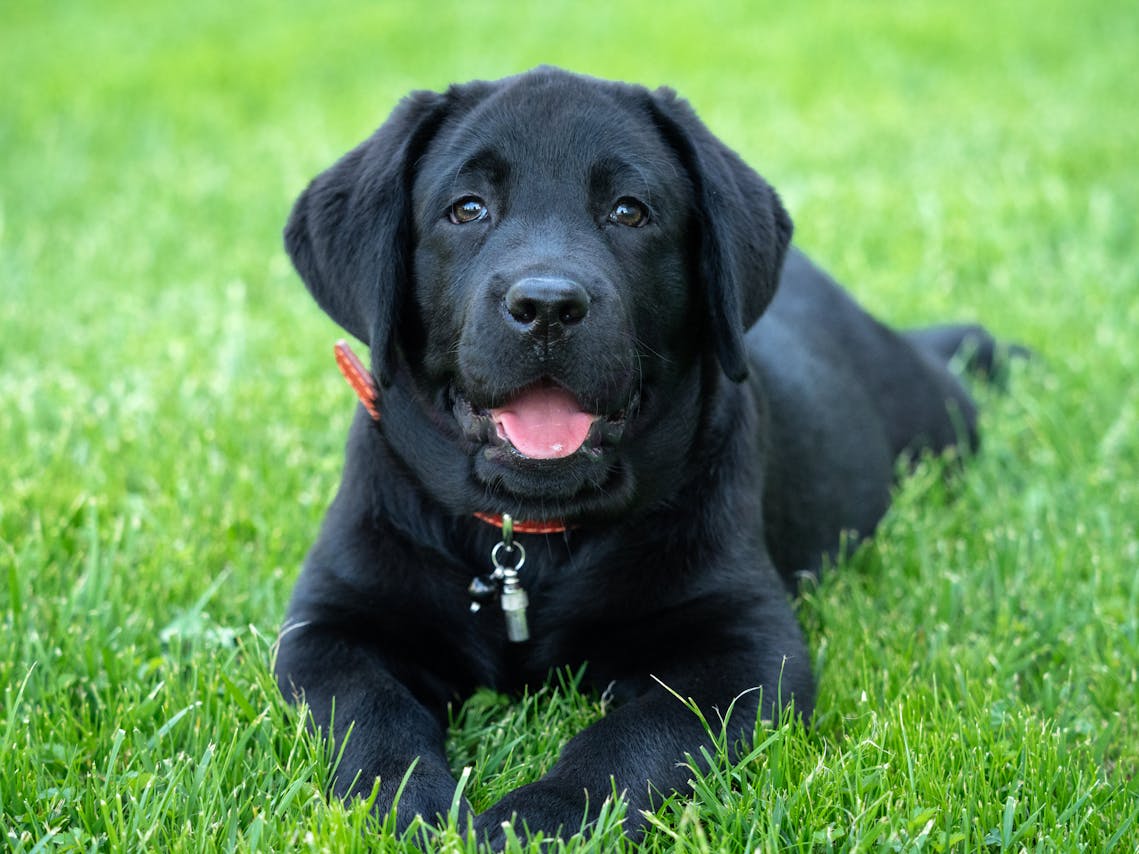
Start with immediate accident cleanup to eliminate any scent markers that might attract your dog to the same spot.
Use an enzymatic cleaner designed for pet stains as it breaks down the organic compounds in urine and feces, effectively removing odors. This step is significant to prevent your dog from associating the area with a bathroom spot.
Stress management is critical when dealing with accidents. Avoid scolding or punishing your dog, as this can increase anxiety and hinder the training process.
Instead, focus on reinforcing positive behavior by praising your dog when they eliminate in the appropriate spot.
Maintain a calm demeanor and redirect your dog to the proper area if you catch them in the act. If accidents persist in specific locations, consider blocking access to those areas or placing training pads temporarily.
This strategy helps control where accidents occur and makes cleanup easier.
Maintain Patience and Consistency
Maintaining patience and consistency is essential for effectively potty training an adult dog, ensuring they understand and adhere to the new routine.
Begin by establishing a fixed schedule for bathroom breaks. Consistent timing helps your dog anticipate when they’ll be taken outside, reinforcing the behavior you want.
Utilize patience techniques such as calmly waiting for your dog to finish their business without rushing them. Praise and reward them immediately after they go in the right spot, reinforcing positive behavior.
Avoid scolding or punishment, as this can create anxiety and delay progress.
Consistency strategies involve using the same command words each time you take them out, like ‘Go potty’ or ‘Do your business.’ This verbal cue helps them associate the command with the action.
Stick to the same potty location to create a habit, making it easier for your dog to understand where they should go.
Track progress by monitoring and recording when and where accidents occur. This data can help you adjust your schedule or approach, ensuring you’re meeting your dog’s needs.
Frequently Asked Questions
Typically, it takes 2-4 weeks to potty train an adult dog. Using consistent potty training techniques and understanding adult dog behavior can expedite the process. Keep reinforcing positive behaviors and be patient for ideal results.
Yes, you can successfully potty train older dogs with medical conditions. Use targeted training techniques, like consistent routines and positive reinforcement, while accommodating their medical needs. Consult your vet for personalized strategies and guarantee regular health check-ups.
Coincidentally, recognizing dog behavior cues is vital. Watch for outdoor signals like sniffing, circling, or whining. These are clear indications your dog needs to go outside. Promptly responding to these cues guarantees effective training and prevents accidents.
To navigate adoption challenges, establish consistent routines and use positive reinforcement. Employ crate training techniques, supervise closely, and reward outdoor successes promptly. Patience and consistency are key to overcoming any unknown history and achieving successful potty training.
Imagine you’re training a stubborn dog. Some breeds, due to their characteristics, are indeed harder to potty train. Breeds like Dachshunds and Basset Hounds might challenge your techniques. Consistency and patience are essential in managing these training techniques effectively
Conclusion
Potty training an adult dog is like steering a ship through calm and stormy seas.
By understanding your dog’s behavior and establishing a consistent routine, you’ll find the designated spot becomes familiar.
Use positive reinforcement to anchor good habits, and supervise to navigate potential mishaps.
Handle accidents with care, always maintaining patience and consistency.
Over time, you’ll see your dog’s progress, a demonstration of your expert guidance and structured approach.
Happy training!
